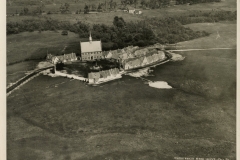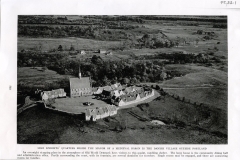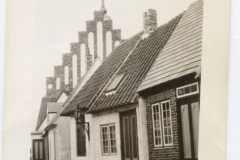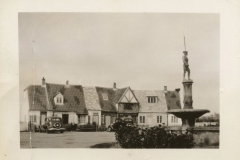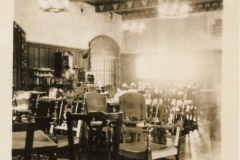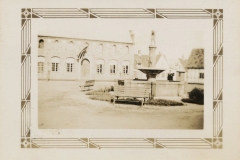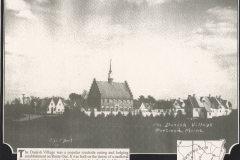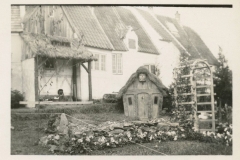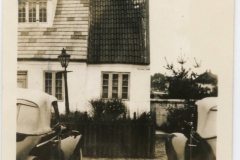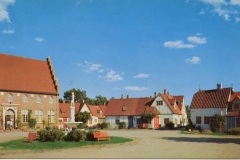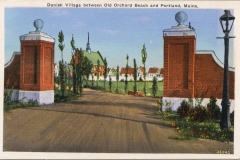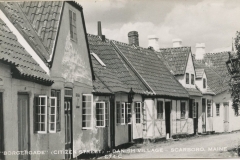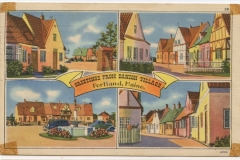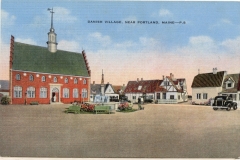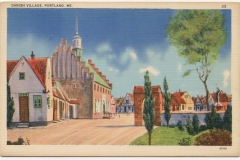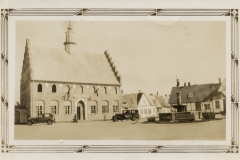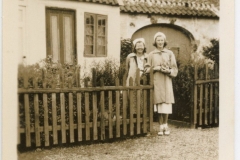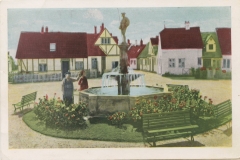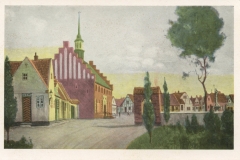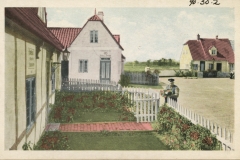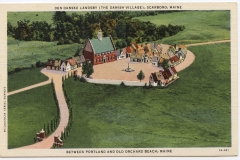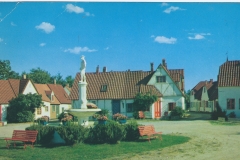PORTLAND EVENING EXPRESS
Tuesday, July 27, 1909 Price Two Cents
Transcription by Linda McLoon
$100,000 FIRE PROUTS NECK
Joscelyn Hotel is in Ashes
All Guests Escape in Safety with Their Personal Effects
Googins Home and Plant Destroyed
 The Joscelyn, one of the most famous summer resort hotels on the Maine coast, owned by Mrs. Frank B. Libby; the residence, garage, machine shop, carpenter shop, and blacksmith shop of Alonzo Googins; and the handsome and costly cottage of Mr. Lemuel Lane of Westbrook were burned to the ground in a fire at Prouts Neck at an early hour this morning. Mr. Googins’ loses practically every dollar he has in the world as he was practically without insurance, having only one policy of $1,000 on his house. Mrs. Libby’s loss is partially covered by insurance and Mr. Lane was also insured to the full value of his house. Mr. Googins had seven horses burned, lost 300 gallons of gasoline in his garage, and expensive equipment in the machine shop, all of which is ruined. Happily there were no accidents in connection with the fire, and all the guests of the Joselyn, about 100 in number, were able to remove their personal effects, so that the loss to the summer tourists consists solely of the inconvenience of being forced to move in such a short order. There were no special facilities for fighting fire, but if there had been, it is probable that they would have been useless because a strong wind was blowing in the direction of the burned buildings and they were all consumed in a remarkable short time, probably not more than an hour and a half from the time the fire was discovered. The fire caught in the barn belonging to the Googins estate. Its origin was a mystery.
The Joscelyn, one of the most famous summer resort hotels on the Maine coast, owned by Mrs. Frank B. Libby; the residence, garage, machine shop, carpenter shop, and blacksmith shop of Alonzo Googins; and the handsome and costly cottage of Mr. Lemuel Lane of Westbrook were burned to the ground in a fire at Prouts Neck at an early hour this morning. Mr. Googins’ loses practically every dollar he has in the world as he was practically without insurance, having only one policy of $1,000 on his house. Mrs. Libby’s loss is partially covered by insurance and Mr. Lane was also insured to the full value of his house. Mr. Googins had seven horses burned, lost 300 gallons of gasoline in his garage, and expensive equipment in the machine shop, all of which is ruined. Happily there were no accidents in connection with the fire, and all the guests of the Joselyn, about 100 in number, were able to remove their personal effects, so that the loss to the summer tourists consists solely of the inconvenience of being forced to move in such a short order. There were no special facilities for fighting fire, but if there had been, it is probable that they would have been useless because a strong wind was blowing in the direction of the burned buildings and they were all consumed in a remarkable short time, probably not more than an hour and a half from the time the fire was discovered. The fire caught in the barn belonging to the Googins estate. Its origin was a mystery.
Discovery of the Fire
At 4:30 o’clock this morning, Henry C. Mursey, a teamster employed by Alonzo Googins at Prouts Neck, rose to go about his daily tasks. He came in late last night with a load of lumber for the carpenter shop and it was his purpose to unload this so that as soon as the horses were ready, he could get another start with his team for market. He grained his horses, went into the loft, pitched down his hay for all the animals, nine in number, and then proceeded to put the team which he was to use into the harness. Backing “Old Tom,” one of the horses which made up his team, out of the stall he went to put on his collar when the staid old animal, thoroughly accustomed to this proceeding, began to snort and jump around. Mr. Munsey was very much surprised that “Old Tom” should exhibit any such coltish tricks, but in his efforts to quiet the animal he himself smelt the smoke which had caused the horse’s alarm. Hastening to the front part of the barn, Mr. Munsey discovered that the place was on fire.
 The section of the barn in which the fire originated was little used by Mr. Googins. No one had been there so far as is known this morning. A quantity of salt thatch, the salt swale grass cut in the marshes, which had lain on the tennis court all winter and through the spring and was thoroughly dried, had been pitched into this part of the barn and was used only for bedding. So far as anyone knows, no one had been there since the horses were bedded down last night. Mr. Munsey cut loose the horses himself and led one of them out of the barn, all the time shouting at the top of his voice to give notice that the place was on fire. The Googins family was aroused and the alarm spread rapidly over the Neck. It seemed to those who were aware of the fire and the danger to the property as if the people in the vicinity would never arouse so long it seemed to them before help came. Probably it was only a few minutes at the longest, because those who tell the story of the fire say that they were awakened at 4:45 and it must have been very close to that time when it was discovered. So rapidly did the fire spread in the Googins barn that when Mr. Googins himself was aroused and Mr. Munsey attempted to re-enter the building it was a seething mass of flame inside, and it was practically impossible to enter it. Someone got another one of the horses out of the building, but seven of them were burned. They were valuable animals, one Mr. Googins had refused an offer of $400 for less than two weeks ago. There were two matched pairs, either of which were worth $500.
The section of the barn in which the fire originated was little used by Mr. Googins. No one had been there so far as is known this morning. A quantity of salt thatch, the salt swale grass cut in the marshes, which had lain on the tennis court all winter and through the spring and was thoroughly dried, had been pitched into this part of the barn and was used only for bedding. So far as anyone knows, no one had been there since the horses were bedded down last night. Mr. Munsey cut loose the horses himself and led one of them out of the barn, all the time shouting at the top of his voice to give notice that the place was on fire. The Googins family was aroused and the alarm spread rapidly over the Neck. It seemed to those who were aware of the fire and the danger to the property as if the people in the vicinity would never arouse so long it seemed to them before help came. Probably it was only a few minutes at the longest, because those who tell the story of the fire say that they were awakened at 4:45 and it must have been very close to that time when it was discovered. So rapidly did the fire spread in the Googins barn that when Mr. Googins himself was aroused and Mr. Munsey attempted to re-enter the building it was a seething mass of flame inside, and it was practically impossible to enter it. Someone got another one of the horses out of the building, but seven of them were burned. They were valuable animals, one Mr. Googins had refused an offer of $400 for less than two weeks ago. There were two matched pairs, either of which were worth $500.
Hotel in Flames’ Path
A strong wind was blowing directly toward the Joscelyn which was only a few feet from Mr. Googins’ property. As soon as help arrived, it was manifest that there was no hope of saving the great hotel, and the efforts of all hands were expended in awakening the guests and removing such of the furniture from the hotel and from Mr. Googins residence as could be taken out. But little of the furniture of the Joscelyn was saved. There was consternation among the guests and employees of the house when the danger to it was known, and there was hasty packing of trunks and removing of effects from all the rooms. Among Mrs. Libby’s furniture were a large number of ornamental pieces manufactured by Mr. Libby as a sort of pastime with the jig-saw, besides much old fashioned furniture which he had from time to time gathered during his lifetime, and which he valued very highly. All of these were saved, together with some of the furniture from the office and parlors and dining rooms. Most of the furnishings of the rooms was destroyed.
Mrs. Libby’s price for the property was $50,000, a part of which is covered by insurance in a Saco agency. The house was well furnished, equipped with elevators, and was a particularly excellent hotelry. The electric power plant was destroyed as well as the main house itself. One cottage was occupied by Mr. and Mrs. A.M. Young of Montreal and family which belonged to the Joscelyn estate, and was very close both to the garage and Mrs. Libby’s power plant, was happily saved. The Youngs, however, expecting the place to be burned, as they had every reason to suppose, hastily packed their many trunks and prepared for the emergency. The will come to Portland for a few days and probably will arrange to remain at some other hotel during the remainder of the summer.
Cause of Fire Mystery
Every one about the Neck is mystified as to the cause of the fire. It originated, as has already been told, in a part of the Googins barn, which is little used. No one so far as is known, had been there since last night. Mr. Munsey, who was the only person in the barn at the time the fire broke out says he never smokes early in the morning and had lighted neither a pipe nor a cigar in the barn or elsewhere up to the time of the fire. There were no electric wires to which the cause of the fire can be laid and it is entirely improbable that the thoroughly dried salt marsh hay could have caught fire from spontaneous combustion. Probably the exact cause will never be known.
Lose Nearly $100,000
The total loss caused by the fire is variously estimated, figures being given ranging from $30,000 to $250,000. A very conservative estimate as it seems to the EXPRESS would place the loss somewhere between $75,000 and $100,000, according to the best information which can be obtained there this morning. Mrs. Libby’s loss is not far from $50,000. Mr. Googins about $13,000, and Mr. Lane’s about $10,000, making the total loss of about $75,000. And it would not be strange if when the figures are finally made up, it will somewhat exceed these figures. About 75 people have been thrown out of employment by the fire. Mrs. Libby employing about 50 hands and Mr. Googins from 20 to 25. Mr. Googins is the mail carrier from the Neck to the Boston & Maine station, and his mail wagons were not saved from the conflagration. He will, however, procure teams to keep up his contract with the Government so that there will be no inconvenience on this score.
Scene of Desolation
 When the EXPRESS reporter and photographer arrived at the Neck early this morning, a scene of desolation was presented to their view. The handsome buildings were in smoldering ruins. Scattered about in various places near the roads were such articles of furniture as had been saved from the buildings, all being in a more or less dilapidated condition. Over these scattered collections of furniture watchers were keeping guard, but there was little need of this, for the community is one in which there would be no thieving. Mr. Lane’s daughter had gathered up the silverware from the cottage, and taken it to what she regarded as a place of safety. At 8 o’clock this morning it was discovered to be missing, and no one seemed to know what had become of it. Mr. Lane when asked about it said that he had not the slightest doubt that it would turn up all right; that he had no fear at all that it had been stolen, but that it had been more carefully put away by some of the neighbors.
When the EXPRESS reporter and photographer arrived at the Neck early this morning, a scene of desolation was presented to their view. The handsome buildings were in smoldering ruins. Scattered about in various places near the roads were such articles of furniture as had been saved from the buildings, all being in a more or less dilapidated condition. Over these scattered collections of furniture watchers were keeping guard, but there was little need of this, for the community is one in which there would be no thieving. Mr. Lane’s daughter had gathered up the silverware from the cottage, and taken it to what she regarded as a place of safety. At 8 o’clock this morning it was discovered to be missing, and no one seemed to know what had become of it. Mr. Lane when asked about it said that he had not the slightest doubt that it would turn up all right; that he had no fear at all that it had been stolen, but that it had been more carefully put away by some of the neighbors.
The loss falls very heavily upon Mrs. Libby. The height of the season had about arrived. The house would have filled to capacity at the end of this week and was booked to be full during the rest of the season. A profitable summer has thus been spoiled, besides the loss of the house and practically all the furnishings.
Efforts to Save Lane Cottage
The handsome cottage owned and occupied by Lemuel Lane of Westbrook was directly in the path of the flames, and it became evident that unless strenuous efforts were made this also would be sacrificed to the greedy flames. A hand bucket brigade was formed, hose was brought into use, and 50 men were stationed upon the roof of the cottage in an unavailing effort to save the property. The wind was blowing the flames directly upon the building, and in spite of all the efforts that could be made, the place caught fire and was destroyed with the rest of the doomed buildings. In all not more than an hour and a half elapsed after the fire was discovered before the entire knoll was swept bare of buildings and only smoldering ruins remained.
17 Automobiles Saved
 Alonzo Googins’ plant was an extensive one. Besides his residence and barn there was a garage, a carpenter shop, a well-equipped machine shop and a blacksmith shop. These with their entire equipment were lost. Robert Lane and some of his young associates, when the fact that the garage must go became apparent, left the menaced cottage of his father, and hastened to the garage, and in the fierce heat of the burning buildings succeeded in removing all the automobiles, 17 in number, to places of safety. These were all that were saved in that part of the establishment. These machines were owned by cottagers and by guests at the various hotels, and came from all parts of the country. All Mr. Googins’ books were destroyed, a loss which falls heavily upon him, as he had many accounts with the people about the Neck. His loss is a severe one since he had but little insurance, one policy of a thousand dollars on the house being all that he carried. The rest of the property was regarded as extra hazardous risks, and was not insured. One feature of his loss which is an inconvenience to the summer people is the loss of 300 gallons of gasoline stored in the garage. There was considerable fear felt lest there should be an explosion, but the fears were not realized. The gasoline constantly from burned freely, a great blaze coming constantly from the mouth of the pipes from which it had been drawn, but doing no extra damage. Mr. Googins employed about 20 people, but these were housed in cottages he owned farther up the neck, and his own house was occupied only by his own family, and the teamsters who had to be about early to take care of the horses.
Alonzo Googins’ plant was an extensive one. Besides his residence and barn there was a garage, a carpenter shop, a well-equipped machine shop and a blacksmith shop. These with their entire equipment were lost. Robert Lane and some of his young associates, when the fact that the garage must go became apparent, left the menaced cottage of his father, and hastened to the garage, and in the fierce heat of the burning buildings succeeded in removing all the automobiles, 17 in number, to places of safety. These were all that were saved in that part of the establishment. These machines were owned by cottagers and by guests at the various hotels, and came from all parts of the country. All Mr. Googins’ books were destroyed, a loss which falls heavily upon him, as he had many accounts with the people about the Neck. His loss is a severe one since he had but little insurance, one policy of a thousand dollars on the house being all that he carried. The rest of the property was regarded as extra hazardous risks, and was not insured. One feature of his loss which is an inconvenience to the summer people is the loss of 300 gallons of gasoline stored in the garage. There was considerable fear felt lest there should be an explosion, but the fears were not realized. The gasoline constantly from burned freely, a great blaze coming constantly from the mouth of the pipes from which it had been drawn, but doing no extra damage. Mr. Googins employed about 20 people, but these were housed in cottages he owned farther up the neck, and his own house was occupied only by his own family, and the teamsters who had to be about early to take care of the horses.
Joscelyn Well Known House

Joscelyn Hotel – Well Known House
The Joscelyn was one of the best known summer houses on the Maine coast. It was built 19 years ago by the late Frank B. Libby, and since his death has been run by Mrs. Libby during the summer months. It has been a profitable house. There were nearly a hundred guests already there and the house was booked to be full by next Saturday night. Mrs. Libby has been desirous of selling the property, as she does not wish the care of the house, which has rested entirely upon her shoulders since the death of her husband, and a customer who it is believed would have bought it had arranged to come to the Neck to close the trade on Saturday night.
Started by Drunken Man?
This afternoon a report was in circulation that a partially intoxicated man was seen about the premises when the fire was raging, and the theory was advanced that it is more than likely that he was an unwelcome guest in the Googins barn, and that the fire originated from his occupancy of the unused portion of the barn. This theory has come to be generally accepted, in view of the fact that no other theory seems tenable.
Mrs. Libby of the Joscelyn said this afternoon that she should not take any steps toward rebuilding. She said that the weight of the responsibility had been a heavy one for her, and that she should endeavor now to sell the lot, which is an excellent site for a summer hotel.
* * * * *
WOMAN LOST JEWELS PROUTS NECK FIRE
Prouts Neck, July 29 [1909] – Special to the EXPRESS
As far as could be learned, the guests at the Jocelyn saved all their personal effects. A Miss Reed, however, had such a short time in which to escape that she lost about $200 worth of jewels and clothing which were consumed in the flames.
PROUTS NECK
The summer colony is rallying bravely from Tuesday’s disaster and things are running smoothly once again. Mr. Googins has started to rebuild his machine shop on the old site and the structure will soon be complete.
* * * * *
Transcribed from the original newspaper from the collections of Ann Googins by Linda Snow McLoon – September 28, 2019
[Note: The photos were not part of the original newspaper article.]
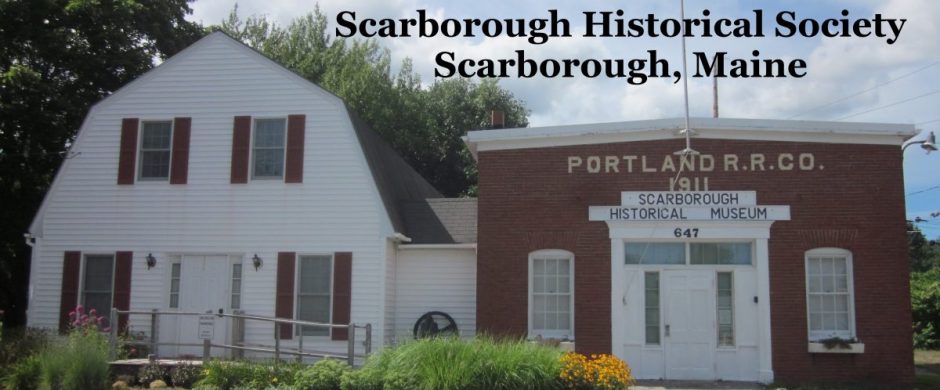






 The Danish Village (Den Danske Landsby) was one of the first motels in the United States. Located on US Route 1 in Scarborough, this unique motel was a replica of a little medieval Danish Town. Each unit consisted of one or two rooms, showers, and twin beds. The Danish Coffee Shop (Den Danske Kaffee Stue) served breakfast and lunch. The Gift Shop featured Scandinavian crystal, ceramics and objets d’ art.
The Danish Village (Den Danske Landsby) was one of the first motels in the United States. Located on US Route 1 in Scarborough, this unique motel was a replica of a little medieval Danish Town. Each unit consisted of one or two rooms, showers, and twin beds. The Danish Coffee Shop (Den Danske Kaffee Stue) served breakfast and lunch. The Gift Shop featured Scandinavian crystal, ceramics and objets d’ art. 